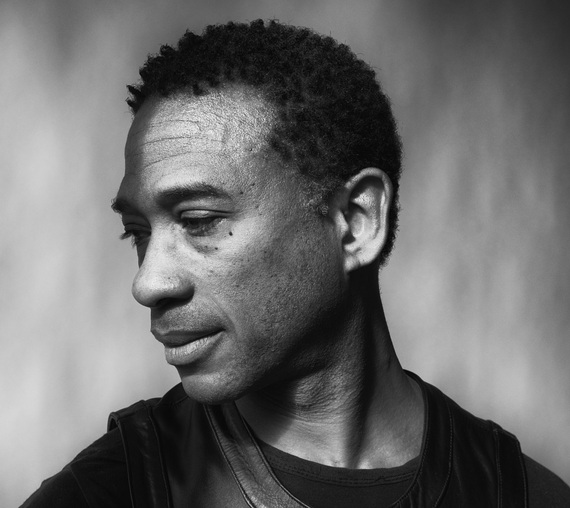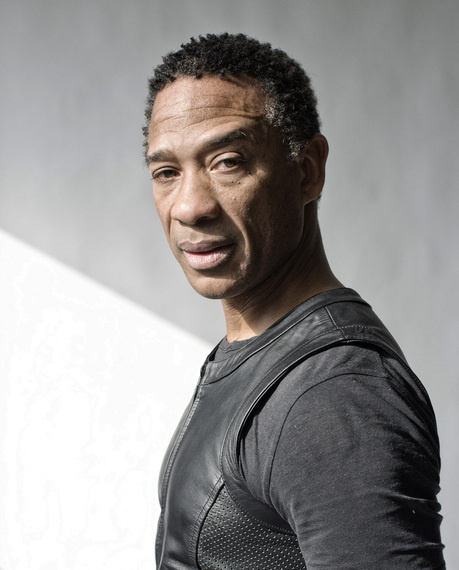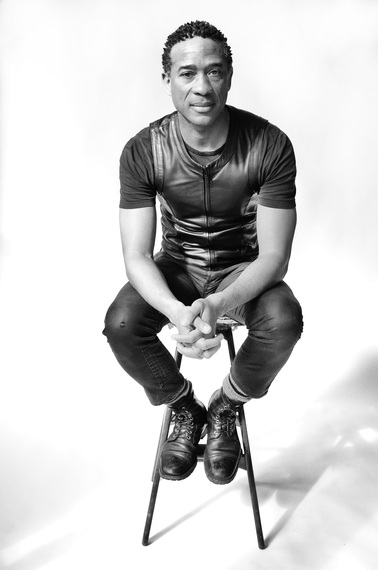Portrait by Daniel Jack Lyons
Richard Stuart Perkins makes for an easy interview. I had the pleasure of sitting down with the filmmaker and photographer recently. He's talented, sweet, and charming. (It's a shame you don't get to hear his contagious laugh.) We touched on some heavy and important topics, and I look forward to your reactions/comments about this conversation.
Phillip M. Miner: Where did you grow up?
Richard Stuart Perkins: Monterey, Calif. It was a great place to be a kid. I'd moved from Germany to Monterey. It was fun: If you skipped, you went to the beach, or you went hiking in the coastal mountains. Big Sur is 20 minutes away. It was great.
Miner: Were you out at all?
Perkins: I was out in high school by default. I ran track, was vice president of my high school, student member of the school board, nerdy, but not an unattractive guy, and yet I never had a girlfriend. I became "the one who doesn't like girls," but no one ever called me gay.
I got asked to the prom by a guy, another member of the track team. Nothing was said, but word got around, but nobody ever said anything to me, and we did not go to the prom. A couple of days later, graffiti was painted on his locker at school. It said, "Mike H is a nigger lover," not, "Mike H. is a faggot." Nothing about being gay. It was "nigger lover." That was, and still is, amazing to me.
Miner: How has race impacted the choices you've made as an artist?
Perkins: It angers me to a huge degree: Either I have to have a conversation, in a photographer sense, about the white male body and white female body, or I have to have a conversation about my blackness in terms of its oppression or its political barriers or boundaries. I don't know if I'm going to be able to change those dialectics. But at the same time, I would really like to think that photographers of color, when we take pictures, are engaged in a conversation about where we stand in the history of photography and the history of art, and that every artistic move we make is trying to reengage the public in a dialogue about our work, our presence, our abilities, contributions to the culture.
I also find it interesting that if you find a photograph of a nude black male or female that highlights musculature, line, shape, volume, one more often than not hears, "This is like a Mapplethorpe picture or a Duane Michals picture." I wonder why we can't compare the work to Rotimi Fani-Kayode, or Lyle Ashton Harris, or Ajamu Ikwe Tyekimdra. I'm left wondering, "How am I allowed to have a different conversation about black body?" Are we forever in opposition to this other narrative?
The racism of the industry is pretty much the racism across the board when it comes down to the work of minority artists in the West.
Portrait by Daniel Jack Lyons
Miner: So you're trying to change the conversation with your work?
Perkins: As much as anybody who sets out to create something would like to create a new conversation. To be honest, I don't know if the old conversation is exhausted. There's a photograph of mine that a professor at Bowdoin College saw and is interested in using as a cover for book on interracial intimacy. The photo is "Me and Lars and Stuff." [You can see this photo in the slideshow below.] In it one sees the lower torso and buttocks of my ex-boyfriend, a fragment of one of my paintings, and some other objects of mine. I'm sitting in the midst of all this. This professor asked me if this photo represented my "personal effort" as a black male to be "in control of [your] own sexual image in the photo," referencing my own words regarding the image. He was also intrigued by another comment I made regarding this photo, concerning how that relationship at the time was "free of those (black/white) tensions thankfully." The "tensions in a photo" are in direct opposition to the idea that the relationship is free of such tensions. I like this battle. I like engagement of this sort.
My work also addresses how the society generally thinks of me as a consumer or a product but very rarely as a creator or a collector, or even less so as someone who's going to mold and construct the lives of white people.
Miner: I can't imagine how fundamentally aggravating that must be.
Perkins: Extraordinarily! That we like to pretend that race is never a factor, or is a minor issue, or that people who mention it are actually the people with the problem. There is a photographic series of mine -- I find it interesting, conceptually. It's of me and a [white] friend of mine who has a muscular, lived-in body. We're naked in the frames together, and at one point I pick him up and I throw him over my shoulder. [You can see this photo in the slideshow below.] Someone was looking at the series and said, "I think this picture is way too much." I ask, "Why?! The black man has been carrying the white man for a long time! What part of this bothers you?"
I try to be lighthearted, but when you think about construction being a symbiotic relationship of ideas and people and the like and -- really, how do I explain this? I was debating with someone the other day that instead of arguing about whether the Beatles or the Stones were the most important band in rock history, we should argue whether Chuck Berry or Little Richard or Sister Rosetta Thorpe are the most important, because they are the fountainheads, the people who created the template, laid down the foundations. What about Smokey Robinson? Berry Gordy? Why don't we have that conversation? Why is that such a difficult proposition? There's room for it all, but we never seem to quite get there.
Portrait by Daniel Jack Lyons




